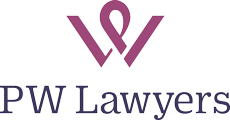What Is Conveyancing Anyway?
)
'Conveyancing' is certainly one of those words that is bandied about an awful lot these days. But what is conveyancing, anyway?
Conveyancing is the area of property law that deals with the transfer of real estate between sellers and buyers.
Although it might seem quite straightforward, property law can be quite complex and conveyancing has to consider issues such as contract terms and conditions, mortgages, covenants, easements, caveats, the type of property title, the type of tenancy, local council regulations and zoning to name just a few.
What Are The Steps In The Conveyancing Process?
Step One
Generally the process begins with the drawing up of a Contract for Sale. The Contract will include things such as:
- the street address and legal property title details
- the length of time between signing and completion of the contract
- what's included or specifically excluded from the sale
- special conditions specific to this particular property
Step Two
The purchaser needs to get legal advice, review the contract, arrange inspections and start making loan arrangements before anything is signed.
Step Three
The contract is signed by both parties, and may be immediately binding, depending on the circumstances of the sale. You may however, have a cooling off period available, or be able to withdraw from the contract under certain conditions, so it's important that you know the exact terms and conditions written into the contract
Step Four
There is a set length of time between the contract becoming binding and the contract being settled or completed. In this time the purchaser of the property has a lot to do including conducting various checks on the property, paying stamp duty, organising insurance and getting any loan arrangements in order, and the seller of the property should be making arrangements with their bank to have any mortgage discharged as well as making plans to move.
Step Five
Before settlement, adjustments to the purchase price are agreed upon between the parties to cover council and water rates as well as other costs which may be allowed for in the contract.
Step Six
On the day of settlement everything has to be in place. The purchaser or the incoming mortgagee has to show up with the funds, and the seller or outgoing mortgagee has to turn up with the property title and the document/s needed to release the mortgage. Everything is handed over including the keys and the property is considered settled.
Step Seven
After settlement the new owner needs to be registered as the owner on the title, and various government bodies need to be informed of the change in ownership.
PW Lawyers Can Help!
As buying property is one of the biggest financial decisions you will make it's important that you get expert advice. Legal expertise and diligence is well worth the cost, and PW Lawyers' experienced solicitors and licensed conveyancers have decades of expertise between them in conveyancing of all kinds.
Contact us today to find out more, or to arrange a consultation with one of our team in Lindfield on Sydney's North Shore.
| Tags:Conveyancing |
